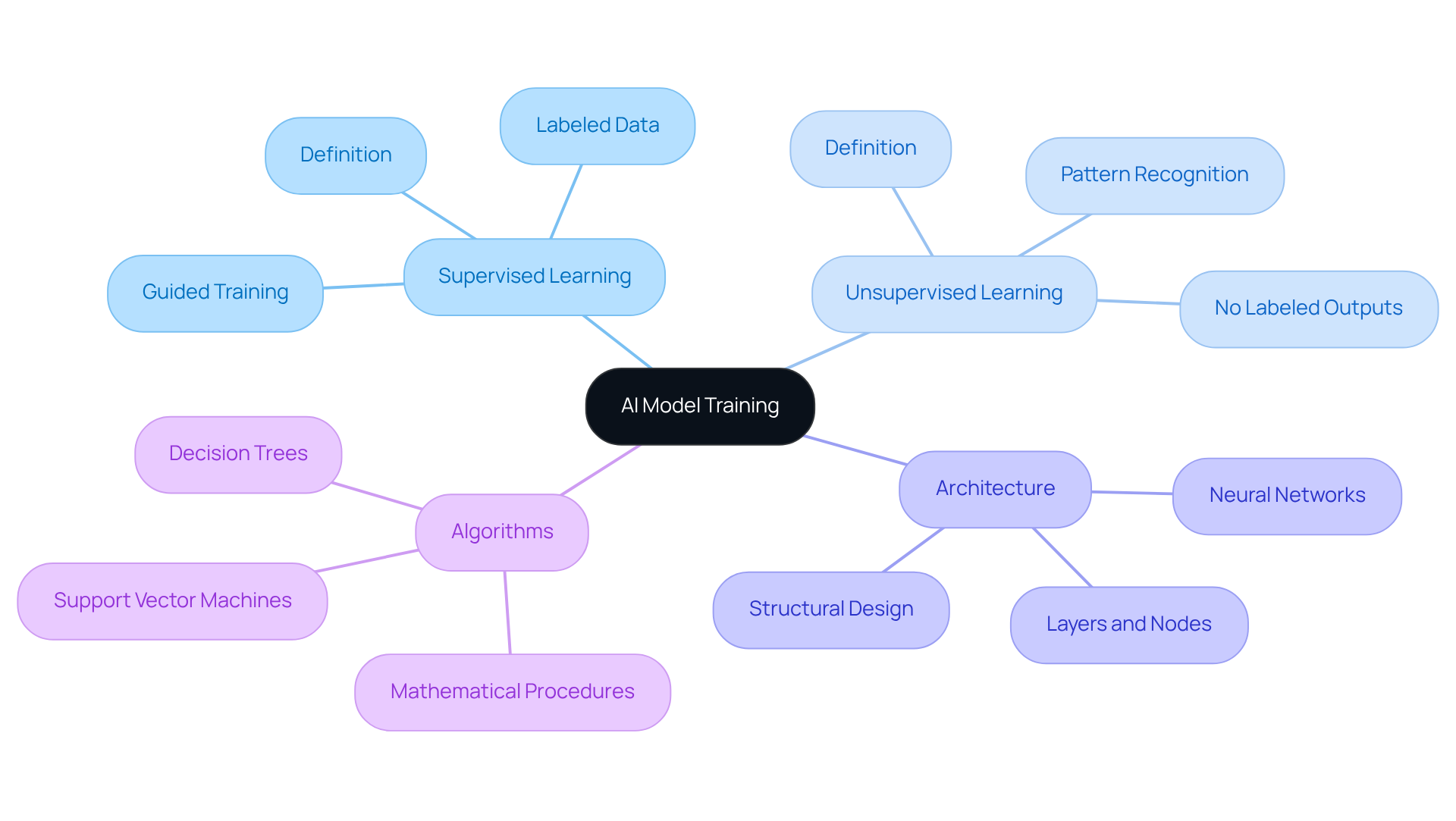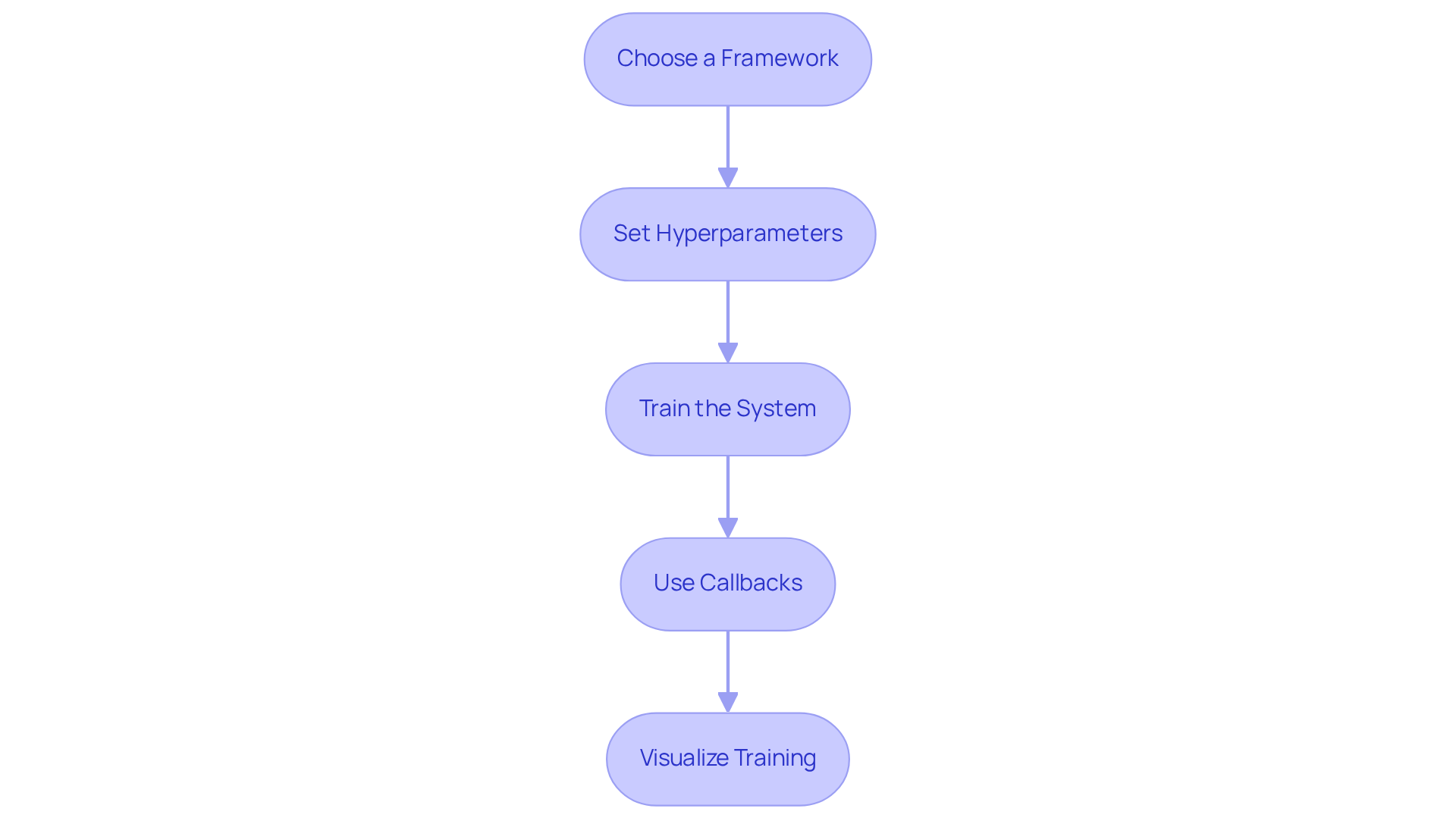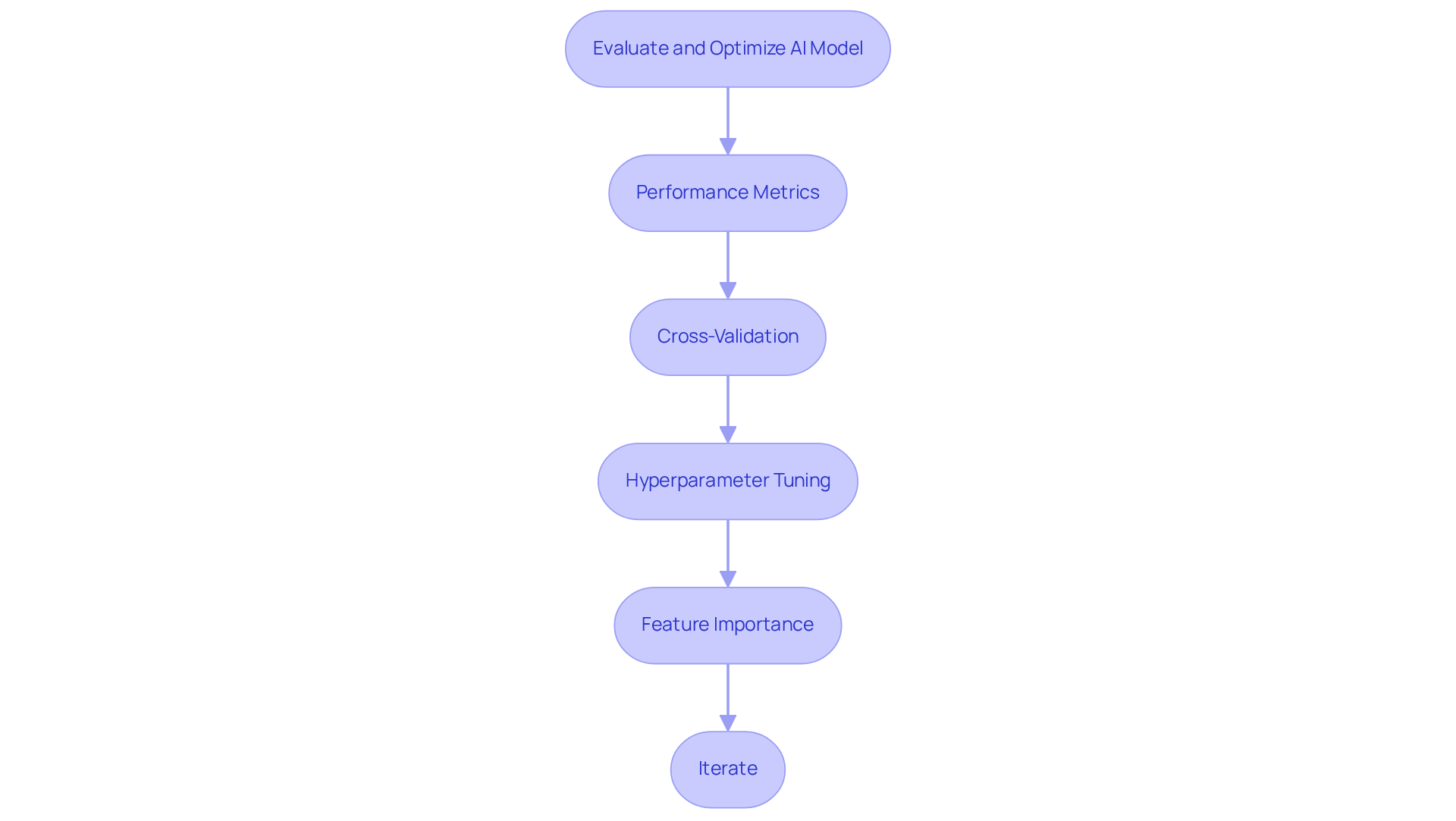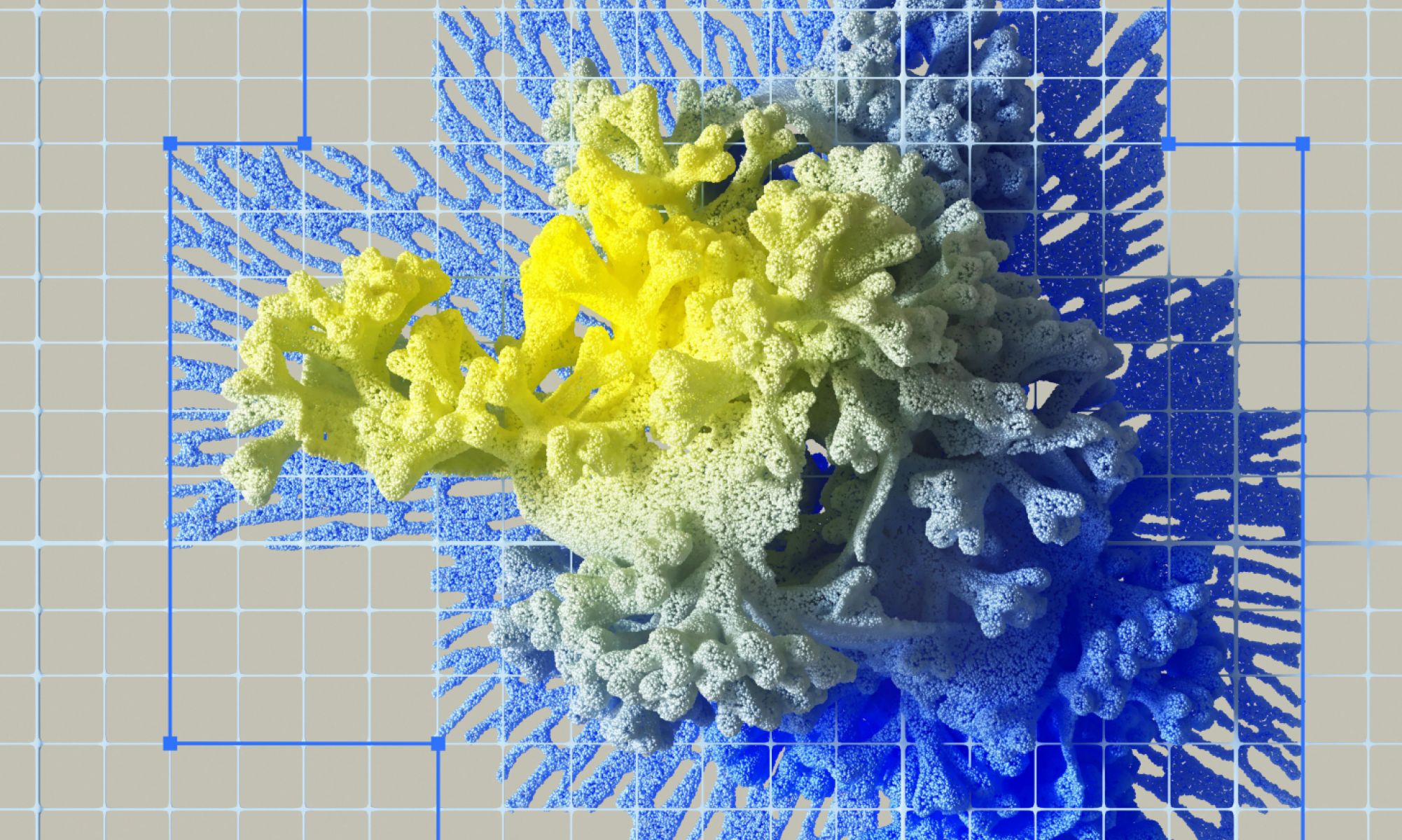AI
our blog
How to Train an AI Model: A Step-by-Step Guide for CTOs

Overview
The article titled "How to Train an AI Model: A Step-by-Step Guide for CTOs" provides a comprehensive methodology for effectively training AI models. It begins by addressing the critical stages involved, including:
- Understanding AI fundamentals
- Preparing data
- Implementing the training process
- Evaluating and optimizing the model
Furthermore, it emphasizes the importance of careful data management and hyperparameter tuning, which are essential for achieving successful outcomes. By following these guidelines, CTOs can ensure that their AI initiatives are grounded in best practices, ultimately leading to more effective and reliable models.
Introduction
Understanding the intricacies of AI model training is essential for any organization aiming to harness the power of machine learning. This guide provides a comprehensive roadmap for Chief Technology Officers (CTOs) to navigate the complex landscape of AI development—from foundational concepts to advanced optimization techniques. However, with the rapid evolution of technology and the increasing volume of data, how can CTOs ensure they are not only keeping pace but also maximizing the potential of their AI initiatives? This critical question underscores the necessity for strategic insight and proactive measures in the realm of AI.
Understand the Basics of AI Model Training
Understanding how to train an ai model is a critical process that instructs machine learning systems to identify patterns within data. Understanding the following key concepts is essential:
- Supervised Learning: This approach involves the model learning from labeled data, where specific input-output pairs are provided to guide its training.
- Unsupervised Learning: In contrast, this method illustrates how to train an ai model to identify patterns in data autonomously, without any labeled outputs to direct its learning.
- Architecture: This term refers to the structural design of the system, encompassing the layers and nodes found in neural networks.
- Algorithms: These are the mathematical procedures employed to train the system, including techniques such as decision trees, neural networks, and support vector machines, which illustrate how to train an ai model.
Grasping these fundamentals will empower you to navigate the complexities of AI development with greater efficiency and confidence.

Prepare Your Data for Training
To effectively prepare your data for training an AI model, follow these essential steps:
- Information Gathering: Acquire source information from reliable repositories relevant to your problem domain, utilizing databases, APIs, or web scraping techniques.
- Data Cleaning: This step is crucial; eliminate duplicates, address missing values, and rectify inconsistencies. Employ tools like Python's Pandas library to streamline this process. As Charles Babbage aptly stated, "Good quality information is the holy grail," emphasizing that high-quality information is essential for successful outcomes, serving as the foundation for reliable analysis.
- Data Transformation: Normalize or standardize your data to ensure that all features contribute equally to the learning process. Techniques such as scaling and encoding categorical variables are vital here.
- Data Splitting: Divide your dataset into preparation, validation, and examination sets to evaluate the effectiveness of the system. A commonly acknowledged division is 70% for preparation, 15% for validation, and 15% for testing.
By carefully organizing your information and employing efficient cleaning methods, you create a robust foundation for successful system development, which is crucial for learning how to train an AI model, ultimately enhancing the performance and dependability of your AI solutions. Additionally, consider that businesses lose $5.2 million in revenue due to untapped data, underscoring the financial implications of poor data management.

Implement and Monitor the Training Process
To effectively implement and monitor the training process of your AI model, adhere to the following steps:
-
Choose a Framework: Select a suitable machine learning framework such as TensorFlow, PyTorch, or Scikit-learn, tailored to your project’s specific requirements. This foundational choice sets the stage for your model's success.
-
Set Hyperparameters: Carefully define hyperparameters, including learning rate, batch size, and number of epochs. These settings are crucial, as they can significantly affect the performance of the system. Effective hyperparameter tuning often differentiates between average and outstanding systems, highlighting its significance in attaining optimal results. As Akash Takyar, CEO of LeewayHertz, states, "Effective hyperparameter tuning is often the difference between an average and an exceptional machine learning system."
-
Train the System: To learn how to train an AI model, utilize your dataset to develop the system, continuously observing performance metrics such as accuracy, loss, and validation scores during the development process. For instance, AI's application of hyperparameter tuning in optimizing sugar production projected a 1.9% increase in annual yield, translating to over $8 million in potential economic value when deployed at scale. This example underscores the tangible benefits of diligent training.
-
Use Callbacks: Implement callbacks to save the system at various checkpoints and to enable early stopping if the system ceases to improve, thus preventing overfitting. This proactive approach safeguards your model's integrity.
-
Visualize Training: Leverage visualization tools like TensorBoard to track training progress and diagnose potential issues, such as overfitting or underfitting. Visualization is key to understanding your model's journey and making informed adjustments.
By carefully executing and observing these steps on how to train an AI model, you can enhance the learning efficiency of your AI system, ensuring it meets standards and fosters business success.

Evaluate and Optimize Your AI Model
To effectively evaluate and optimize your AI model, consider the following steps:
-
Performance Metrics: Utilize crucial metrics such as precision, recall, F1 score, and ROC-AUC to evaluate your system's effectiveness on the test dataset. For instance, a Logistic ROC AUC score of 0.996 signifies outstanding effectiveness in differentiating between classes. These metrics provide a comprehensive perspective on how well your system is functioning.
-
Cross-Validation: Apply k-fold cross-validation to assess your system's effectiveness across various subsets of information. This technique not only aids in reducing overfitting but also ensures that your system generalizes effectively to new data. Recent trends in k-fold cross-validation highlight its significance in providing a more reliable performance assessment, particularly in complex datasets. Notably, the first decile has 14% of the responders, showcasing the effectiveness of this method in diverse scenarios.
-
Hyperparameter Tuning: Experiment with various hyperparameter settings using methods like grid search or random search. This process is vital for determining the optimal configuration that enhances your system's predictive capabilities. For example, achieving a precision score of 1 indicates no Type-I errors, underscoring the importance of tuning.
-
Feature Importance: Analyze feature importance to identify which variables significantly affect your predictions. Understanding these contributions can guide additional feature engineering and system improvement. The Mean Squared Error (MSE) for the Boston Housing regression problem, which stands at 21.89, illustrates how feature selection can influence system effectiveness.
-
Iterate: Based on the evaluation results, refine your approach by enhancing data preparation, adjusting algorithms, or incorporating additional features. Continuous iteration is essential for improving system effectiveness and ensuring alignment with organizational goals. As Tavish Srivastava, co-founder and Chief Strategy Officer of Analytics Vidhya, states, "Evaluation metrics are quantitative measures used to assess the performance and effectiveness of a statistical or machine learning system."
By systematically applying these evaluation and optimization strategies, you can significantly enhance your AI model's effectiveness and learn how to train an AI model that delivers substantial value to your organization.

Conclusion
Effectively training an AI model is essential for any CTO aiming to leverage the power of artificial intelligence within their organization. This guide has delineated the crucial steps, from understanding foundational concepts to executing data preparation, monitoring training processes, and assessing model performance. By mastering these components, leaders can ensure their AI initiatives are not only successful but also sustainable over time.
The article explores vital aspects of AI training, including:
- The differentiation between supervised and unsupervised learning
- The significance of data quality
- The complexities of hyperparameter tuning
Each section underscores the necessity of a structured approach, whether it involves cleaning and transforming data or employing performance metrics to evaluate success. The insights provided emphasize that meticulous preparation and ongoing evaluation are critical in developing AI systems that yield tangible results.
In a landscape where data-driven decision-making is increasingly crucial, the capability to train AI models effectively can distinguish organizations from their competitors. By adopting the best practices outlined in this guide, CTOs can optimize their AI systems, drive innovation, and unlock new avenues for growth. Embracing these principles will ultimately contribute to a more informed and agile organizational strategy, ensuring preparedness for future challenges.









